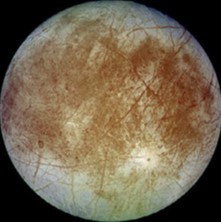Detecting nanoscale vibrations as signature of life
- 11 Feb 2018
- Volume 12
- NanoScientific Magazine, Winter 2018
Original article by Sandor Kasasab, Francesco Simone Ruggeria, Carine Benadibaa, Caroline Maillarda, Petar Stupara, Hélène Tournuc, Giovanni Dietlera, and Giovanni Longoa
Laboratoire de Physique de la Matière Vivante, Institut de Physique des Systèmes Biologiques, Facultè des Sciences des Base, École Polytechnique Fédérale de Lausanne, 1015 Lausanne, Switzerland; bDépartement des Neurosciences Fondamentales, Faculté de Biologie et de Médecine, Université de Lausanne,1005 Lausanne, Switzerland; and cDepartment of Molecular Microbiology, Vlaams Instituut voor Biotechnologie (VIB), B-3001 Leuven, Belgium
Abridged by Park Technical Staff
Based on the principle that one of the common signatures of life is movement, because even small microorganisms vibrate in response to their metabolic activity, research done in 2014 with Francesco Simone Ruggeri and others explored the use of an innovative nanoscale motion sensor that could be used in lifesearching experiments in Earth-bound and interplanetary missions. This nanomotion detector is used to study these fluctuations and associate them to the metabolic activity of the specimens. This technique does not measure the chemical response of life, which would require prior knowledge of the metabolic pathways involved. Instead, it monitors the physical manifestation of any kind of metabolic activity the microorganisms might have. This research showed how this nanomotion detector can study any living system, paving the way to a complementary approach to the study of life in extreme environments.
The working principle of the technique may be summarized as follows. A microfabricated atomic force microscopy (AFM) cantilever is inserted into an analysis chamber, and specimens are attached to its surface. The cantilever transduces the movements of the samples with a sub-nanometer resolution. The dynamic deflections of this sensor are detected and recorded using a laser-based transduction system. The time resolution and sensitivity of this system make it ideal to study living specimens at the nanoscale. It can be operated in air or in a liquid environment; in this latter case, the living specimens can be exposed to triggering or inhibiting chemicals to characterize their response to the stimuli.
AFM proved to be a valuable technique to exploit the sensitivity of nanomechanical oscillators to transduce the small fluctuations that characterize living systems. By combining chemical and dynamical measurements, this method could help future missions seeking to explore the presence of life on satellites of the giant planets, such as Europa (Jupiter) or Titan and Enceladus (Saturn).

Since Europa has water, future missions will search for signs of life. In February, NASA received a report for a possible landing mission to Europa, which has been in the works since June 2016. In the landing mission, a probe will search for evidence of life on Europa, assess its habitability, and characterize the surface and subsurface for future explorations to this moon and its ocean.
This ocean has at least twice as much water as Earth’s oceans. While recent discoveries have shown that many bodies in the solar system either have subsurface oceans now, or may have in the past, Europa is one of only two places where the ocean is understood to be in contact with a rocky seafloor (the other being Saturn's moon Enceladus). This rare circumstance makes Europa one of the highest priority targets in the search for present-day life beyond Earth.
